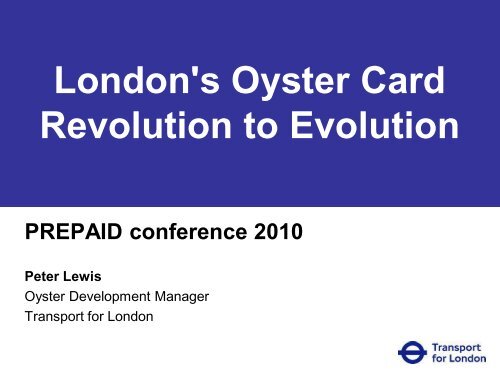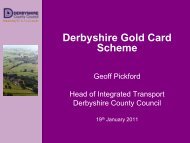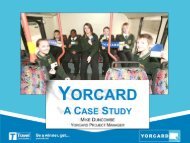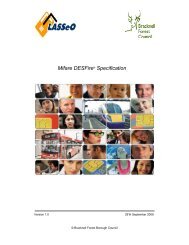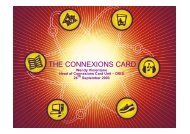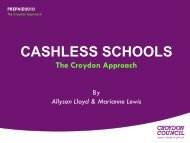Case study the next generation Oyster Card - Peter Lewis 905kb
Case study the next generation Oyster Card - Peter Lewis 905kb
Case study the next generation Oyster Card - Peter Lewis 905kb
Create successful ePaper yourself
Turn your PDF publications into a flip-book with our unique Google optimized e-Paper software.
Extended use of <strong>Oyster</strong>• <strong>Oyster</strong> onNational RailServices• <strong>Oyster</strong> on ThamesRiver BoatServices3
Over 13 millioncontactlesstaps a day
Fare collection objectives – 2010onwardsTfL aims to:1. Retain operational benefits ofcontactless fare collection –passenger throughput & fraudreduction2. Maintain & improve customerconvenience of contactlesstravel & ease of payment3. Reduce fraud and ticket-lesstravel fur<strong>the</strong>r, and reduce costs –one of <strong>the</strong> Mayor‟s priorities5
<strong>Oyster</strong>: Current State• TfL very happy with what it has achieved with<strong>Oyster</strong>– Customer satisfaction is very high– Business objectives achieved– Faults/deficiencies are small and manageable• No desire to give up <strong>Oyster</strong> without improving onkey deliverables• Biggest concern going forward is cost of revenuecollection6
Current challenges• Despite <strong>the</strong> visible success of <strong>Oyster</strong>, ticketing still represents adifficult business model• Need to think from first principles about models for revenuecollection7
Multiple sales channels• TfL channels– Ticket offices– Self-serve machines– Web• Third party channels– National Rail “joint stations”– <strong>Oyster</strong> Ticket Stops– Visit London– Visit Britain– Eurostar– Coach operators– WH SmithsCommissions8
How can we lower our revenue collectioncosts?We have reviewed our options for 2010-2020• Considered all „flavours‟ of contactless:– transit-specific– payments– NFC• Considered wider technology trends• Current hypo<strong>the</strong>sis:– Embrace payments industry standards not transit ones– Exploit fast network technologies to get complexity off <strong>the</strong> cards– Cope with fares policy complexity in TfL-specific back-office• Payment standards = +9
The future of moneyContactless bankcard and mobile payment platforms finally seem tobe appearing on <strong>the</strong> market10
Work to date – this is not a standingstart!• Initial learnings from BarclaycardOnePulse in 2007• Embarked on formal discussionswith Master<strong>Card</strong> and Visa in late2007– EMV education– Concept– Proof of concept demonstrations• Member of Payment Council largecorporate user forum11
TfL’s Future Ticketing Vision• Maximise revenue net of cost of sale• Increase customer self-service– Reduce queues for tickets– Reduce ticket selling costs– Take of advantage of internet technology– Improve customer journey experiences– Eliminate <strong>the</strong> need to top up or purchase a ticket and <strong>the</strong>n travel• Centralise fare calculation system– Reduce dependency on read/write cycle & complex calculationsat 25,000+ card readers– Easier implementation of fare and product changes12
Delivering <strong>the</strong> vision• Bank and payment card acceptance as an alternative tocurrent ticketing technology– Acceptance by product type– Introduction of new products – weekly capping?• Migration of <strong>Oyster</strong> into EMV technology• Eventual elimination of <strong>the</strong> „currency exchange‟This is evolution, not ano<strong>the</strong>rrevolution13
14A vision of <strong>the</strong> future
Thankyoupeterlewis@tfl.gov.uk


